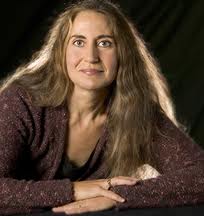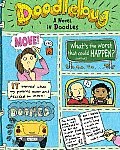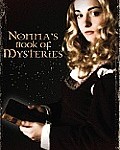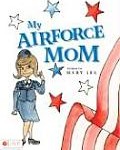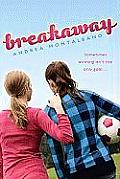In addition to teaching at the University of Oregon, Lauren Kessler is the author of several narrative nonfiction books, including Stubborn Twig, which tells the story of Japanese internment camps during World War II, and Dancing With Rose. In Dancing With Rose, Kessler goes to work in an Alzheimer’s facility so she can learn how the disease affects those who have it, and in the process, maybe learn more about her own mother’s decline and death from Alzheimer’s. In her newest book, My Teenage Werewolf: A Mother, A Daughter, A Journey Through the Thicket of Adolescence, Kessler once again embeds herself in another culture—this time to find out more about the lives of teen girls so she can form a stronger connection with her own teen daughter. (See my review.) After reading My Teenage Werewolf, I asked Kessler a few questions that she answered for readers here at Mother Daughter Book Club.com.
Many moms search for ways to connect with their daughters, why did you think writing a book about teenage girls and their lives would help you understand your own?
LK: The easy (and complicated) answer to this is that I am a writer – it’s what I know how to do, it’s how I process experience and how I understand the world. It’s my act of discovery. If I’d been a photographer I’d have captured images of my daughter. If I’d been a musician, I would have written songs about her. But I don’t know how to do that. I know how to ask questions and dig for answers and immerse myself in other worlds and then, I hope, write myself into a place of knowing. Or at least knowing more than when I started.
Did the book take a different direction than you thought it would when you first started researching it?
LK: The book was always about the journey to understanding, the path to a closer bond with my daughter, a deeper and abiding connection. But I didn’t know what that path would be…so there were surprises and twists and turns along the way. I didn’t know the journey would contain so much humor, for example. On the brink of my daughter’s teen years, our relationship had gotten pretty tense – and pretty intense. But My Teenage Werewolf is actually a funny book – infused with that special humor – astonished, edgy, soft, loving, exasperated – the special way mothers see themselves and their kids, this amazing mix of emotions, the stuff that keeps us sane. I didn’t know the story would turn out to be so much about power – hers not mine – and I didn’t know the extent to which learning about my daughter would help me learn about myself, not just as a mother but as the daughter I used to be.
My daughters have always been open to seeing me around school when I volunteer, but I’m not sure they would have been happy about having me shadow them throughout the day. Why do you think Lizzie agreed that you could do this?
LK: “Shadowing” may not be the way to look at it. That sounds perilously close to “stalking”! I did, in fact, regularly attend middle school, the school where my daughter was a student. And many of the classes I sat in the back of were ones in which she was a student. But, as you say, there are often adult volunteers in classrooms, so my presence wasn’t weird or obvious. In the hallways, lockerrooms, cafeteria and playing field, I kept my distance. Occasionally, Lizzie would acknowledge me. When in the throes of a great mood — count those times on the fingers of one hand! – she might even walk with me down the hall or grab my hand. (Be still my heart.) Other times she might shoot me icy looks and run, not walk, in the opposite direction.
I can’t answer for her about her motives for allowing me this extraordinary access, this privilege. I can only tell you my take on it. I think it was all about the balance of power. I basically asked Lizzie to be my expert, my source, my guide. She got to teach me. I was her student. This was particularly the case when she instructed me on her online life and taught me computer games, and when she helped me through my week as a summer camp counselor. But it was just generally true. She was empowered throughout this process, and this changed the dynamic between us, and it showed my respect for her. That’s why I think it worked.
What discovery did you make about the lives of teen girls that surprised you the most?
LK: The whole teen brain thing was a revelation to me. I know, of course, about “raging hormones”– we all do — but that is such a relatively small part of what is going on in the brain during the shift from adolescence to teenhood and young adulthood. I was astonished, the more I read, the more experts I talked to, what a messy construction site the teen brain really is, and how so much of the erratic, mercurial, risky (snotty? hard to live with?) behavior of teens comes from an incompletely wired pre-frontal cortex. (I’ve got a lively chapter on this.)
I was also astonished at how savvy the girls were about just the things that keep us mothers up at night: sex, drugs, internet predators. I am not saying they did the right thing, that they invariably made the right choices (blame at least some of this on that discombobulated brain). I am saying that they understood the terrain better than we think they do (and sometimes better than we do). I sat through a week of sex ed classes at school, or example. During one session, the kids were asked to share what their responses would be if they were being pressured to have sex and didn’t want to. Only the girls volunteered responses – no surprise here – but if their mothers (all mothers) could have heard those responses…the intelligence and power and self-confidence behind those responses – well, we would all be sleeping better at night.
Is there something you wish you would have been able to do when researching My Teenage Werewolf that didn’t work out?
LK: I wanted to embed (okay, pun intended) myself in a pajama-party/ sleepover to hear lots and lots of girl talk. Especially the 3 am crazy-tired-wired girl talk. But there was no way to be noninvasive about this. There was no way to be “invisible.” It was such an intrusive idea that I didn’t even bring it up to my daughter.
How old is your daughter now?
LK: Lizzie is 16 and about to be a high school junior. Even as I write that, I don’t believe it. My little girl.
Has Lizzie read the book?
LK: Parts of it. I think it’s astonishing that she didn’t run right up to her room and read the entire manuscript the second it was done (I gave her a bound copy a year before the book came out), but that’s just Lizzie. She is unpredictable. “I lived it. I don’t have to read about it,” is what she said, when I pressed her. Which makes sense, I guess. Anyway, her taste in literature runs to horror and thriller. (I thought about telling her that My Teenage Werewolf had both those elements…) But I did read big sections of the book to her during the writing. She had final approval. She could censor. So, for anything that seemed iffy at all, I read her what I had written. In only one instance did she ask me to not include a detail.
Has researching and writing My Teenage Werewolf changed your relationship with Lizzie? If so, in what way?
LK: Yes. Most definitely. I understand the rhythm of her days, the stresses and strains, the energy it takes to be her, to be a 21st century teen girl. I understand what’s happening inside – the brain development – which has helped me come to terms with her mercurial nature. And I am very very aware of the issues of control and power that underlie our relationship, all mother-daughter relationships. This has helped me find ways to acknowledge her power without moving away from my own responsibilities as a parent.
Do you have recommendations for other moms who want to forge a closer relationship to their teen daughters?
LK: Spend one whole day at your daughter’s school. It doesn’t have to be in her classroom. You don’t have to follow her around. But be in that building for seven hours and experience her world…the noise, the action, the energy, the rhythm of it. It will help you understand her state of mind when she comes home. This is BIG.
Here’s another practical tip – and I’m betting many moms out there know this without knowing they know it: Have your serious conversations in the car, not at the kitchen table or in her room. I’ve talked to therapists about this after I experienced this phenomenon…that is, that Lizzie and I had our very best conversations in the car. And they had heard this before and had various theories about why it might be true. Try it!
And most important: Let your daughter teach you something. Shift the balance of power by letting her be the expert. It’s amazing what can happen.
Is there anything else you’d like to share with readers at Mother Daughter Book Club?
LK: Just to reiterate what you already know: Reading together also creates a lovely and lasting bond, I love book clubs and want to support them. I happily do phone or Skype interviews with book clubs. Details are in the “events” section of my site, www.myteenagewerewolf.com.

